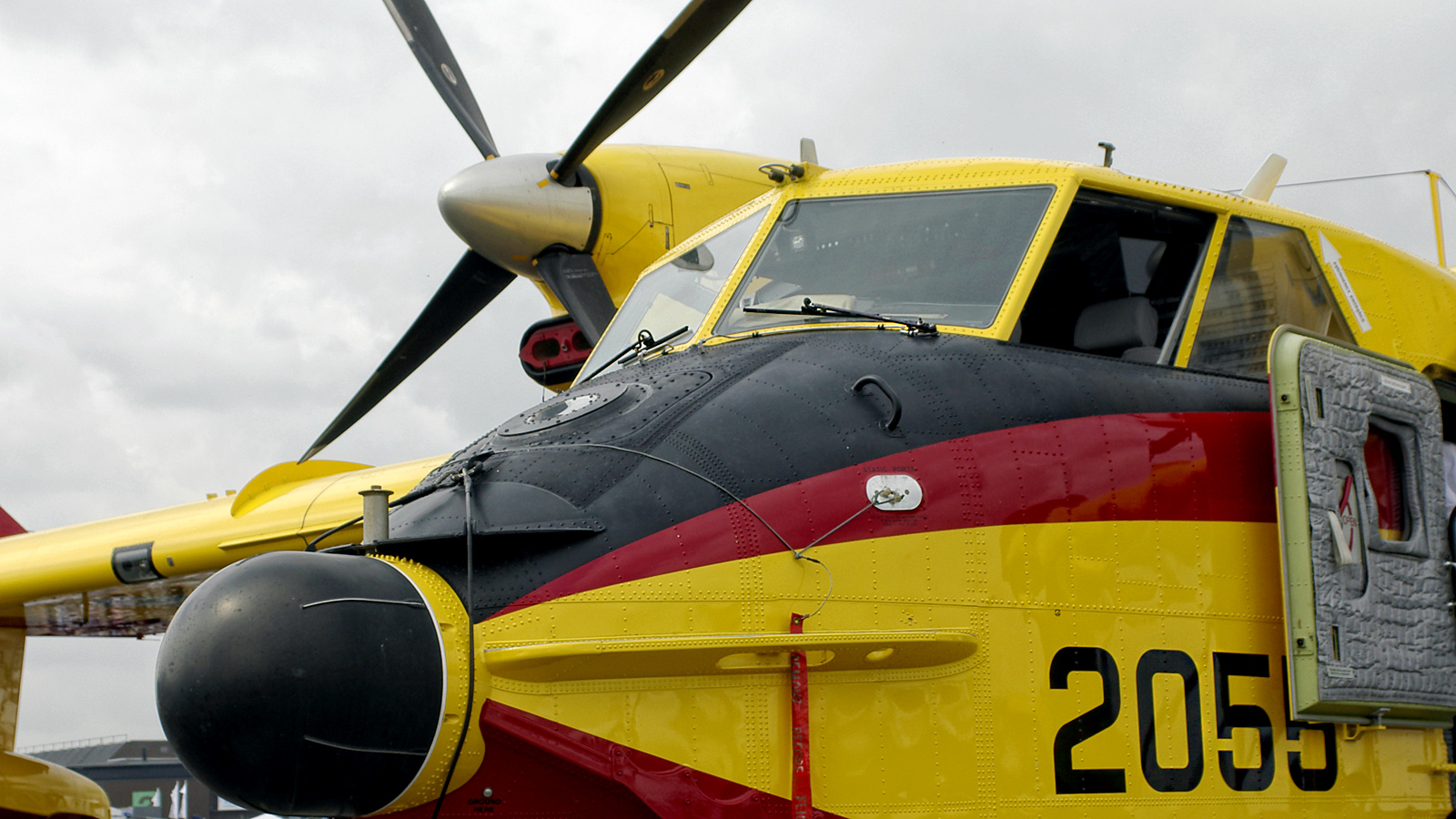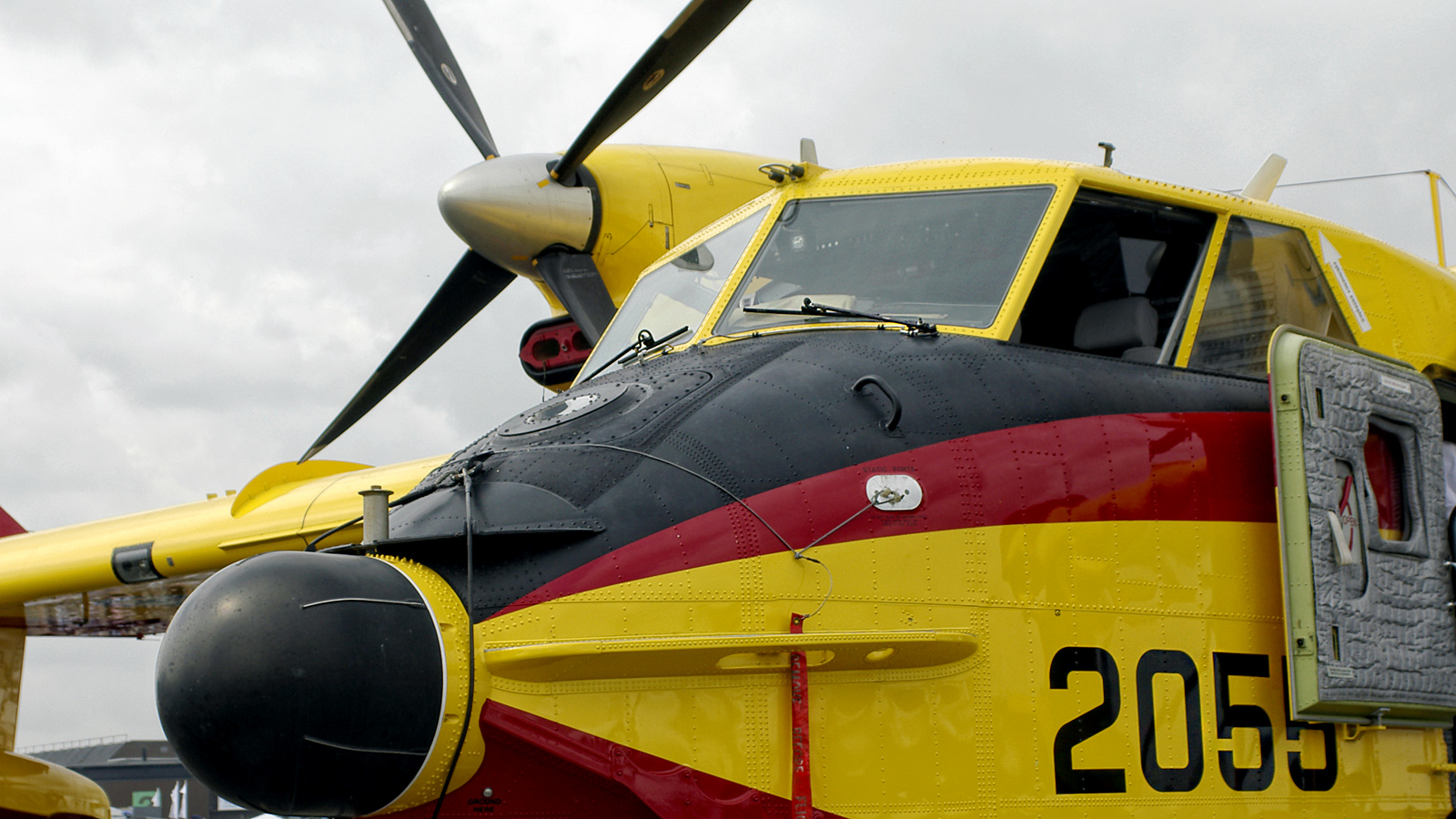
CL-215 is a twin-engine, high-wing aircraft designed to operate well at low speed and in gust-loading circumstances, as are found over forest fires. It is also able to land and take off from short, unpaved airstrips.
Developing nation: Canada.
Manufacturer/designer: Bombardier Aerospace.
Production line: 1969-1990 Saint-Laurent, Quebec.
Number built: 125.
Type aircraft: amphibious aircraft purpose-built as a water bomber.
First flight: 23 October 1967.
First delivery: June 1969.
Canadair CL-215, unique amphibious aircraft designed to fight forest fires with water bombing and chemical fire retardants. It can scoop up a load of over 5000 litres of water in 10 seconds while skimming over a body of water, and jettison it over a fire in less than 1 second. It first flew October 1969 and is still in use, although it went out of production in 1989.
To be truly effective, CL-215s must be reasonably close to a suitable water source (two miles long and 6 feet deep), and must be used in conjunction with aggressive ground attack.
The strategy with these aircraft is to place the suppressant load directly on the fire, thereby reducing fire intensity to the point where ground forces can effectively battle the fire using only pumps, hand tools, etc.CL-215 effectiveness is diminished, however, if ground attack is not carried out directly behind the tanker drop, since the retarding action of the drop is only temporary, and is lost as soon as the moisture evaporates.
Substantially improved gains can be made through integrated CL-215/ground action on a fire, as opposed to either type of action used in isolation from the other.
CL-215T
Originally the subsequent CL-215T was to be a simple turboprop powered development of the CL-215, and Canadair converted two aircraft in 1989 to act as development aircraft. The first of these flew on June 8 that year. Retrofit kits for CL-215s to the new standard are offered, but Canadair elected not to build new CL-215Ts, and instead developed the CL-415.
General characteristics
- Crew: 2 pilots
- Capacity: 18 passengers (utility version)
- Payload:
- 5,346 litres (1,176 Imp gal) of water or
- 6,123 kg (12,000 lb) of chemicals
- Length: 19.82 m (65 ft 0? in)
- Wingspan: 28.60 m (93 ft 10 in)
- Height: 8.98 m (29 ft 6 in)
- Wing area: 100.3 m? (1,080 ft?)
- Empty weight: 12,065 kg (26,600 lb)
- Max takeoff weight:
- From water: 17,100 kg (37,700 lb)
- From land: 19,730 kg (43,500 lb)
- Powerplant: 2? Pratt & Whitney R-2800-83AM 18-cylinder radial engines, 2,100 hp (1,566 kW) each
Performance
- Cruise speed: 291 km/h (157 knots, 181 mph) (max recommended power)
- Stall speed: 123 km/h (66 knots, 76 mph)
- Range: 2,260 km (1,220 nm, 1,405 mi)
- Rate of climb: 5 m/s (1,000 ft/min)
In-service Aircraft December 2009 |
|||||
Country |
215 |
215T |
415 MP |
415 |
Total |
| France | 12 | 12 | |||
| Greece | 13 | 1 | 7 | 21 | |
| Italy | 19 | 19 | |||
| Italy, Privately owned | 5 | 5 | |||
| Spain | 5 | 14 | 3 | 22 | |
| Spain, Privately owned | 2 | 2 | |||
| Turkey | 5 | 5 | |||
| Croatia | 6 | 6 | |||
| USA, North Carolina | 1 | 1 | |||
| USA, Minnesota | 2 | 2 | |||
| USA, Privately owned | 3 | 3 | |||
| Malaysia | ? | 2 | 2 | ||
Canada |
? |
||||
| Alberta | 3 | 1 | 4 | ||
| Manitoba | 7 | 7 | |||
| Newfoundland | 6 | 6 | |||
| N.W.T. | 4 | 4 | |||
| Ontario | 9 | 9 | |||
| Quebec | 4 | 2 | 8 | 14 | |
| Saskatchewan | 6 | 6 | |||
| Total | 66 | 17 | 3 | 64 | 150 |

Be the first to comment